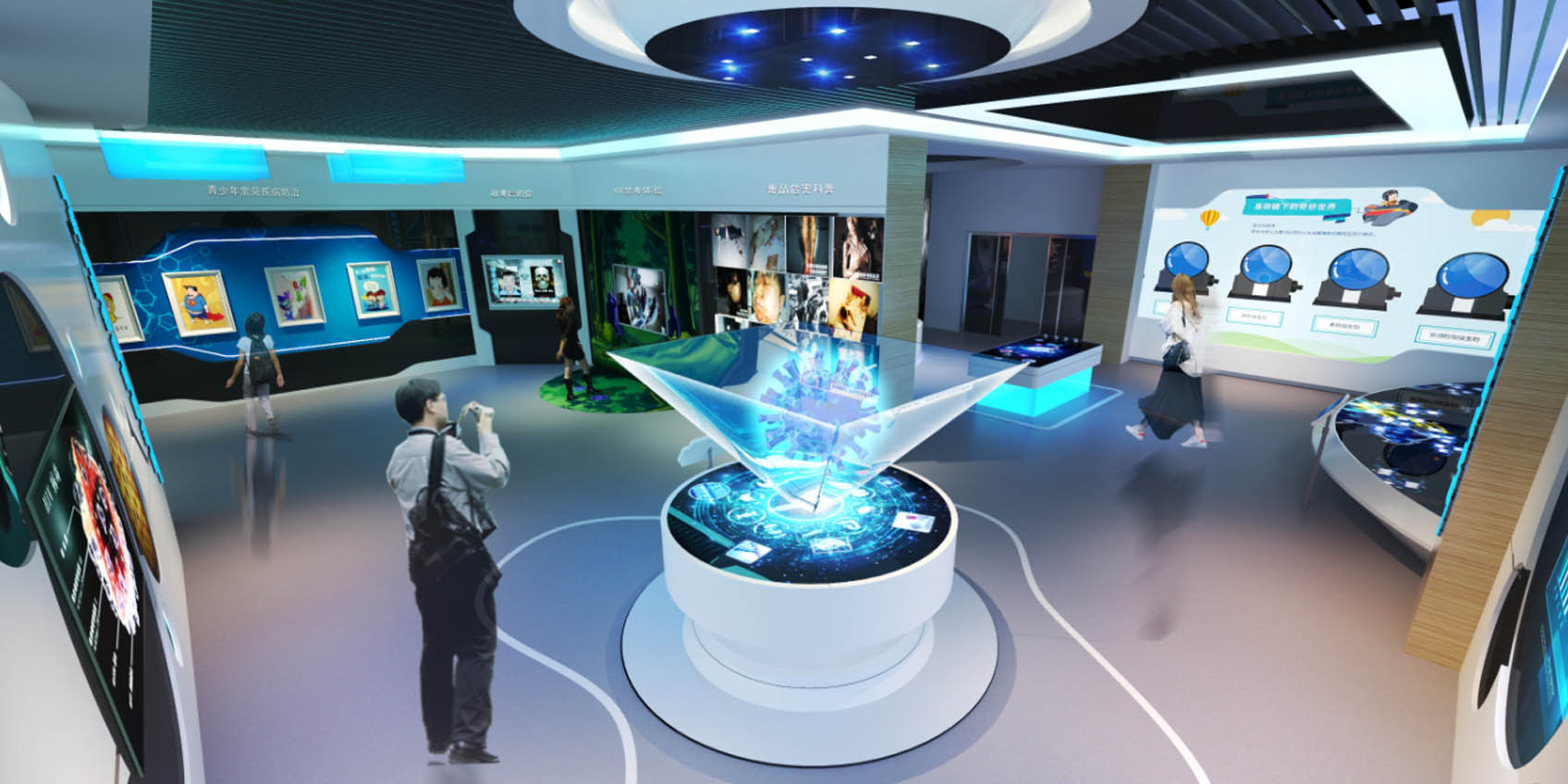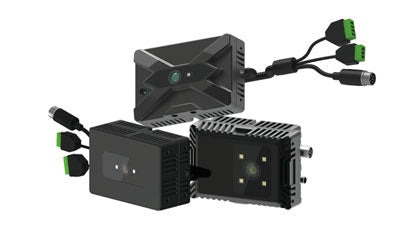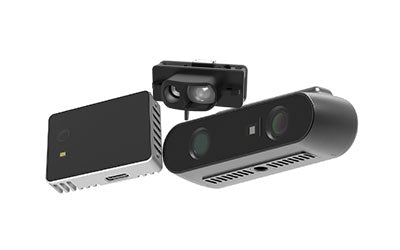3D Vision Systems: Revolutionizing Automation Across Industries

With rapid advancements in Artificial Intelligence (AI), Machine Learning, Depth Sensing, and Computer Vision, 3D Vision Systems are becoming essential in smart automation. By leveraging high-precision cameras, LiDAR, Time-of-Flight (ToF) sensors, and advanced AI algorithms, these systems enhance machine perception and environmental interaction, making them indispensable in industries such as smart manufacturing, autonomous driving, robotic navigation, medical imaging, logistics automation, and AR/VR.
What is a 3D Vision System?
A 3D Vision System is a technology that utilizes stereo cameras, LiDAR, structured light, and ToF sensors to capture depth information, detect an object's shape, size, and position, and process this data using AI-driven algorithms for tasks such as object recognition, localization, and measurement. Compared to traditional 2D vision, 3D vision systems provide more precise spatial analysis, making them crucial for applications like:
- Robotic Guidance – Industrial robots use 3D vision for precise object gripping and automated assembly.
- Autonomous Driving – Self-driving vehicles leverage LiDAR and depth cameras for real-time navigation and collision avoidance.
- Smart Warehousing – AI-powered 3D scanning optimizes inventory tracking and automated sorting.
With the continuous development of AI, 5G, cloud computing, and edge computing, 3D vision systems are becoming a cornerstone technology in industrial automation.
Core Technologies of 3D Vision Systems
1. Advanced Depth Sensing
3D vision systems rely on technologies such as:
- LiDAR – Provides high-precision distance measurements for autonomous navigation.
- ToF (Time-of-Flight) Sensors – Enables real-time depth sensing for gesture recognition and robotic vision.
- Structured Light – Enhances high-resolution 3D scanning for industrial inspection.
- Stereo Vision – Uses dual-camera systems for depth perception in robotic automation.
For instance, in autonomous vehicles, LiDAR and high-resolution cameras work together to map environments, ensuring safe navigation.
2. High-Precision Object Recognition
The accuracy of 3D vision is determined by:
- Accuracy – How closely the measurement reflects the actual value.
- Precision – The consistency of repeated measurements.
In industrial automation, 3D vision systems detect microscopic defects, such as:
- Welding irregularities in electronics manufacturing.
- Surface defects in automotive production.
This ensures higher product quality and process efficiency.
3. Optimized Camera Field of View (FoV)
3D cameras come in varied FoV configurations depending on application needs:
- Wide-angle lenses – Ideal for smart warehouses and logistics automation.
- Narrow-angle lenses – Used in precision manufacturing and defect inspection.
For example, automated sorting systems in warehouses utilize wide-FoV 3D cameras to efficiently sort packages of different sizes, while precision engineering relies on narrow-FoV cameras for high-accuracy measurements.
Applications of 3D Vision Systems
1. Smart Manufacturing & Quality Control
3D vision technology enhances industrial automation by enabling:
- Robotic Guidance – AI-driven robotic arms recognize and manipulate objects with high accuracy.
- Automated Quality Inspection – Detects scratches, deformations, and misalignments with greater accuracy than 2D vision.
- Precision Assembly & Measurement – Ensures sub-millimeter precision in aerospace and semiconductor manufacturing.
2. Autonomous Driving & Smart Transportation
In self-driving vehicles, drones, and AI-powered traffic systems, 3D vision systems are used for:
- Real-time 3D mapping using LiDAR.
- Obstacle detection with ToF depth cameras.
- Autonomous navigation through AI-powered scene analysis.
Tesla, Waymo, and Baidu Apollo integrate multi-sensor 3D vision to enhance vehicle navigation and safety.
3. Smart Warehousing & Logistics Automation
3D vision systems optimize logistics operations by improving:
- Automated Sorting – AI-powered 3D scanning identifies package sizes, barcodes, and labels in e-commerce logistics.
- AGV & AMR Navigation – Autonomous Mobile Robots (AMRs) use SLAM (Simultaneous Localization and Mapping) for efficient warehouse movement.
- Smart Inventory Tracking – 3D vision monitors stock levels in real-time, reducing manual errors and supply chain costs.
4. Medical Imaging & Surgical Navigation
3D vision technology is transforming healthcare through:
- AI-powered 3D medical imaging for CT, MRI, and ultrasound.
- Surgical Navigation – AR-assisted 3D visualization enhances precision in neurosurgery and orthopedics.
- Robotic Surgery – Da Vinci surgical robots perform minimally invasive procedures with micro-scale precision.
Future Trends in 3D Vision Systems
As industries continue to push the boundaries of automation and intelligence, 3D vision systems are evolving to meet growing demands for accuracy, speed, and adaptability. The integration of Artificial Intelligence AI, multi-sensor fusion, and high-speed processing technologies like 5G is unlocking new possibilities in machine perception, making 3D vision a core driver of the next industrial revolution.
1 AI-Powered 3D Vision for Smarter Object Recognition
Artificial Intelligence is transforming 3D vision from simple perception into intelligent decision-making. By integrating deep learning algorithms, AI-powered 3D vision will achieve:
- Advanced Facial Recognition: AI-driven 3D biometric scanning enhances security and access control, improving accuracy in facial recognition under varying lighting and angles. This is crucial for applications in surveillance, secure authentication, and fraud prevention.
- AI-Powered Defect Detection in Industrial Automation: 3D vision, combined with AI, can detect surface flaws, microcracks, and structural deformations in manufacturing, significantly improving quality control with higher precision than traditional 2D inspections.
- Autonomous Security Surveillance for Smart Cities: AI-powered 3D cameras can monitor large areas, identify potential threats, track individuals in real time, and provide automated alerts to enhance public safety and reduce security risks.
With ongoing AI advancements, 3D vision will not only capture data but also analyze, interpret, and act on it autonomously, leading to a new era of intelligent automation.
2 Multi-Sensor Fusion LiDAR + ToF + Thermal Imaging for Enhanced Perception
To improve environmental adaptability, next-generation 3D vision systems will integrate multiple sensing technologies, allowing machines to perceive their surroundings with greater accuracy and reliability. Key innovations include:
- LiDAR and Thermal Imaging for Low-Visibility Environments: In harsh weather conditions like fog, rain, and darkness, combining LiDAR with thermal imaging enables machines to detect objects more accurately than optical cameras alone. This is particularly beneficial for autonomous vehicles, industrial robots, and military applications.
- AI-Driven Multi-Spectral Imaging for Industrial Inspections: By merging 3D vision with infrared, ultraviolet, and X-ray imaging, industrial systems can detect material composition, hidden defects, and surface anomalies with unparalleled precision. This enhances quality control in electronics, aerospace, and pharmaceutical manufacturing.
- Millimeter-Wave Radar + 3D Vision for Enhanced Object Tracking: Autonomous vehicles and drones will leverage radar combined with 3D vision to improve detection of fast-moving objects, ensuring safer navigation in dynamic environments. This fusion enhances vehicle-to-object and vehicle-to-pedestrian awareness.
Multi-sensor fusion will make 3D vision systems more robust, capable of operating in diverse environments with minimal errors, further enhancing automation across industries.
3 5G-Enabled High-Speed Processing for Real-Time Applications
The introduction of 5G networks and edge computing is revolutionizing 3D vision by enabling ultra-fast data transmission and processing. This will significantly enhance:
- Real-Time Object Tracking with Ultra-Low Latency: In applications like autonomous driving, AI-powered robotics, and augmented reality AR, 3D vision systems require instant data processing to react in real-time. 5G connectivity minimizes lag, ensuring precise and immediate responses to environmental changes.
- Faster AI Processing for Smart Manufacturing and Medical Imaging: 5G enables industrial robots and automated systems to process vast amounts of 3D vision data instantly, improving efficiency in manufacturing lines. In healthcare, AI-powered 3D medical imaging systems will analyze CT and MRI scans in real time, accelerating disease diagnosis and treatment planning.
- Seamless Cloud Integration for AI-Powered Robotics: 5G allows 3D vision systems to offload complex computations to cloud-based AI models, reducing hardware requirements while improving machine intelligence. This is crucial for robotics, where high-speed connectivity ensures continuous learning and adaptation.
With 5G, 3D vision technology will move beyond standalone systems and become part of a fully connected ecosystem, enabling smarter, faster, and more efficient automation solutions.
Conclusion: 3D Vision Systems Driving Smart Automation
3D vision technology is reshaping industries from manufacturing and logistics to autonomous driving, medical imaging, AR/VR, and security. As AI, depth sensing, 5G, and sensor fusion continue to evolve, 3D vision systems will become even smarter, faster, and more precise, playing a crucial role in industrial automation, smart cities, and healthcare innovations.
The future is here—3D vision is the foundation of next-gen smart automation!
Synexens 3D Of RGBD ToF Depth Sensor_CS30
Our professional technical team specializing in 3D camera ranging is ready to assist you at any time. Whether you encounter any issues with your TOF camera after purchase or need clarification on TOF technology, feel free to contact us anytime. We are committed to providing high-quality technical after-sales service and user experience, ensuring your peace of mind in both shopping and using our products.
-
Publié dans
CS30






